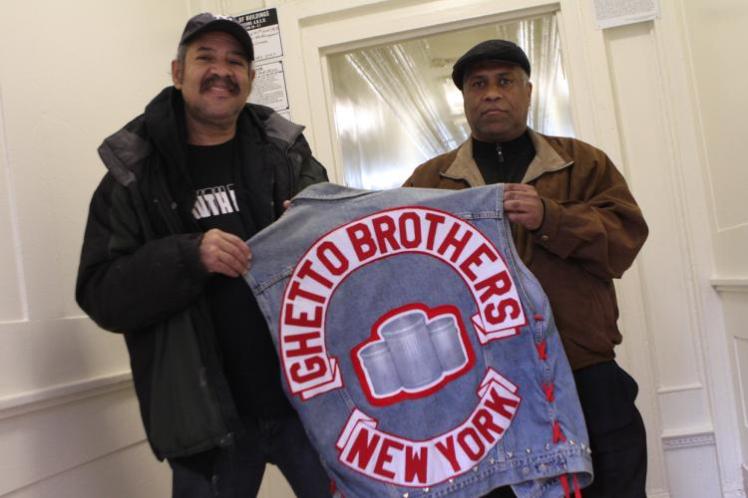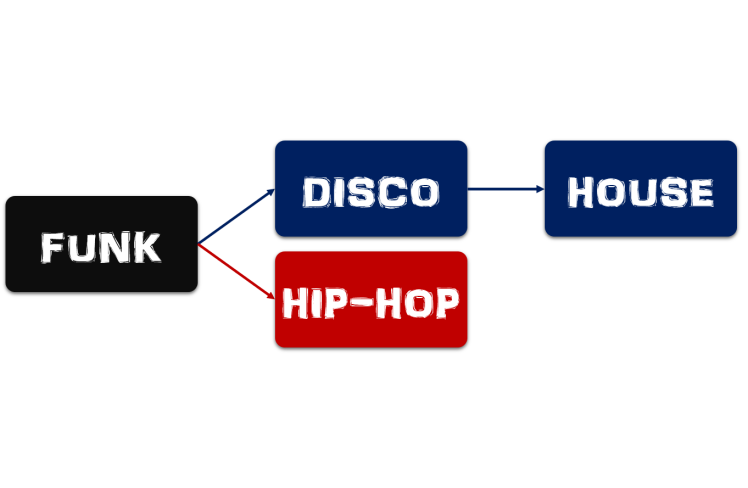Few days ago, I went to a talk titled ‘Hip Hop Street Dance History’, presented by Teacher Aga from Taiwan. After doing some research, I really wanna share my findings with you all!
Disclaimer: The history of street dance is rather subjective. It’s a story we tell by mouth, as there was no written history about it. Feel free to correct me if I got it wrong or if I left anything significant out. Thanks!
Back in 1920s, party dance, a.k.a. social dance, a.k.a. soul dance started to appear. It originated from African tribes, where it was one of the ways they communicate with one another. In my opinion, the moves are significantly important, as it seems to be the root of most of the dance moves we see today.
In 1960s, Break Beats was introduced by James Brown’s band on a show called Live at the Apollo. It quickly caught on and played in block parties.
In the late 1960s and early 1970s, there were gangs fights in Bronx, New York. After the death of “Black Benjie”, a member of the Ghetto Brothers who fought for peace, people wanted revenge, an eye for an eye. However, Benjamin Melendez thought otherwise. Quoted from him, “Black Benjie died for peace and if you take revenge and declare war, it will have been in vain”. Led by Benjamin, Hoe Avenue peace meeting happened. Around 40 New York’s biggest gangs attended the meeting in Bronx Boys Club to broker a peace treaty. The peace treaty played a significant role in the birth of Hip Hop, as it allowed the people to cross borders and travel with ease between neighborhoods, and to trade beatdowns for B-boying and rap battles.

In the 1970s, DJs were the spotlight of parties. And DJ Kool Herc happened. He would often buy two copies of a record and stretch the break parts by using two turntables and mixing in both records before the break ends (source: ThoughtCo.). His style caught the eyes of others quickly. On the other hand, DJ Grandmaster Flash was the first person who placed marks on his CDs and play the discs like a musical instrument. Together, along with Grandmaster Caz and Afrika Bambaataa (founder of the Universal Zulu Nation), they played at parties all over Bronx and they started to refer this culture as ‘hip-hop’.
Hip Hop culture was founded on the principles of ‘Peace’, ‘Unity’, ‘Love’ and ‘Having Fun’.
The Rock Steady Crew was also formed in that period. They were made up of JoJo, Jimmy Dee, Easy Mike, and P-Body. The New York Times called them ‘the foremost breakdancing group in the world today’.
On the west coast, a TV show called Soul Train aired. It was the first talent show for black people, and it became a big hit, aired from 1971 to 2006. There was also this thing called ‘soul train line’, where they lined up in two lines and danced off to the other line.
Before 1980s, breaking, locking and popping were all mixed together. After 1980s, people started to separate them out into each unique style of dance.
Popping
It came from California. It was often danced to funk music or disco music, and also electronic music later on. Notable poppers in history: Boogaloo Sam, The Electric Boogaloos, made up of Pop’in Pete, Skeeter Rabbit, Mr. Wiggles, etc, and more.
Locking
Created by Don Campbell
It was an accident, according to him. When he was trying to do a move called ‘Funky Chicken’, he locked his arm without even realizing it. And yet, people loved it! They were all calling him to “do the lock! do the lock!”. It then became a thing, originally known as ‘Campbellocking’, which later shortened to ‘locking’.
The Lockers, formed by Campbell and Toni Basil, became the first PAID street dance performers in history. There is also another significant group in locking called The Gogo Brothers.

Disco music was later created in the east coast. One of the significant artists would be Donna Summer. And here comes a new style of dance – Waacking.
Waacking came from the west coast. I was told that it was a sign for homosexuals, kinda like ‘if you wack, then you are gay’. Back in the days, waacking was spelled as ‘wacking’, until Tyrone Proctor decided to add an ‘a’ to the word ‘wack’ in order to turn this negative term into something positive. Proctor also founded the Imperial House of Waacking (I.H.O.W.).
House music came in later on. It all started when Frankie Knuckles, a.k.a. The Godfather of House Music, played at The Warehouse in Chicago. People loved his style of music. They began to refer his music as ‘House music’, as it came from the club’s name, ‘Warehouse’. Frankie Knuckles became so popular that he attracted different crowds to the club, bringing people together. From what I’ve heard, it broke the barrier between straight people and gay people. Along with the creation of house music, house dance was born.
Hip Hop itself is a very broad term. Hip Hop culture consists of emcee-ing/rap, deejay-ing, graffiti and b-boying. However, Hip Hop dance is referred to dancing to Hip Hop music using social dances. It was also influenced by Reggae with the steps like Butterfly and Pepper Seed. You have the groove (bounce, rock, wave, roll), the vocabulary (from the party dance), the flow, the feelings, etc.
And I just learned a new word – Hype dance. It was also known as east coast style hip hop. It came out before the era of New Jack Swing. New Jack Swing is a music genre created by Teddy Riley, and it is actually the original name for a genre of R&B music in the 90’s. It is not hip hop, but people do hip hop dance to it (even I do sometimes). There is no such thing called ‘New Jack Swing’ dance, as the moves in some New Jack Swing videos already existed even before New Jack Swing was created.
Source: Dance History: Hip-Hop Dance (Mid 80’s – Now)
Notable Hip Hop crews: Elite Force, Dance Fusion, The Soul Bros, The Misfits, etc.
There was this period of time from mid 80s to early 90s known as the Golden Era of Hip Hop. At that time, Hip Hop was huge. It was taking over the world. It was everything.
In the present, Hip Hop is getting more and more commercialized. Many Hip Hop choreography nowadays are more to commercial Hip Hop a.k.a. Urban Style (combining street jazz and contemporary). It’s both a good thing and a bad thing – people all around the world get to know about Hip Hop, but at the same time, the original ‘flavor’ is fading away.
I used to get really confused about Hip Hop. I was told that Hip Hop emerged in the late 1980s and that people have been doing popping, locking and breaking long before Hip Hop, but at the same time popping and locking and breaking are all hip hop… what is going on?!
Quoted from Miss Nanji, before Hip Hop music became a thing, breaking, locking and popping were all danced to Funk music. According to Popin’ Pete, after Afrika Bambaataa used the term “hip hop” in a magazine article in 1982, any dance that originated in the street in Los Angeles or New York came under the name “hip hop”.
Interview with Popin’ Pete & Mr. Wiggles Monsters of Hip Hop – July 7-9, 2006, Orlando, Fl
Fascinating, right?!
By the way, there is one thing that always bugs me – many acquaintances I know in Malaysia love to categorize K-pop and Hip Hop together! Che cazzo? They are so different!! Ughh the conversation always goes like:
“What style do you dance?”
“Hip Hop”
“Oh, K-pop!”
“No, Hip Hop, it’s different.”
“Okay Hip Hop. But can you teach K-pop?”
“… …”
Originally, I was going to say the timeline goes: Breaking -> Popping -> Locking -> Waacking -> House -> Hip Hop.
However, after I did more research, I found that every source dated their creation differently. Some said that popping came in the 1960s, some said that breaking came after popping and locking, some said that breaking was the first to exist.
Quoted from Popin’ Pete,
The culture existed before the name.
It is probably too ignorant to make any “timeline” for the development of street dance. And I guess it doesn’t matter. The main point is, street dance is what brings people together, to make peace, to unite, to love one another, and to have fun.
Feel free to have a discussion with me as I would love to learn from another perspective!
Thanks for reading. Y’all have a good day! Peace out x
Really enjoyed reading about the history of hip hop, makes me really wonder and appreciate the process of how everything came to be right now, we often take things for granted as always having been there, anyway, I would love to hear more of your opinions in these blog entries, keep dancing and loving dance 🙂
LikeLiked by 1 person
Thank you!! Glad to hear!! I know right. It ain’t easy to keep a culture alive. I’ll do my best! All the best to you too! x
LikeLike